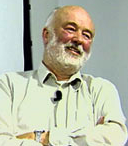

 |
 |
MIDS → Midas, MidasPlus (80's and 90's) → UCSF Chimera (late 90's to present)
expensive facilities, people visit us → everyone has their own graphics, we distribute software (first by mailing tapes, now by providing downloads)
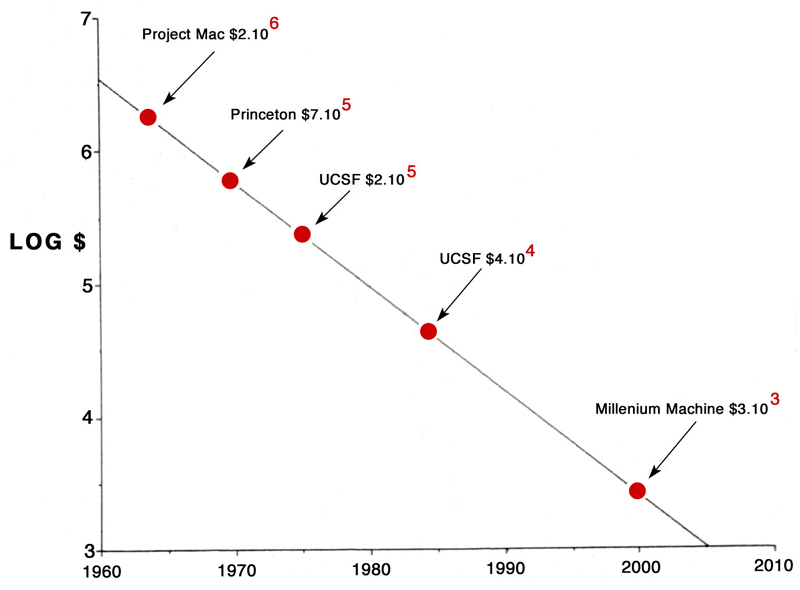 |
Not shown are similarly dramatic increases in power and rendering capabilities.
A pop culture contribution: the DNA molecular graphics in “Star Trek II: Wrath of Khan” (1982)
In 2018, Bob Langridge, Peter Kollman, and Tack Kuntz were jointly awarded the UCSF Medal (video).
Images from Evans & Sutherland PS2 (~80's) – vector graphics as opposed to today's raster, row-based approach:
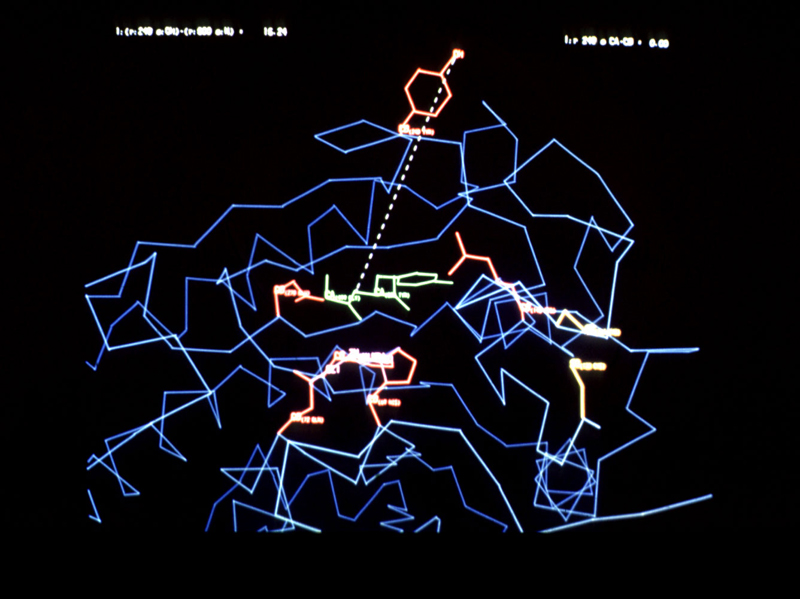 |
DNA “rose window” image:
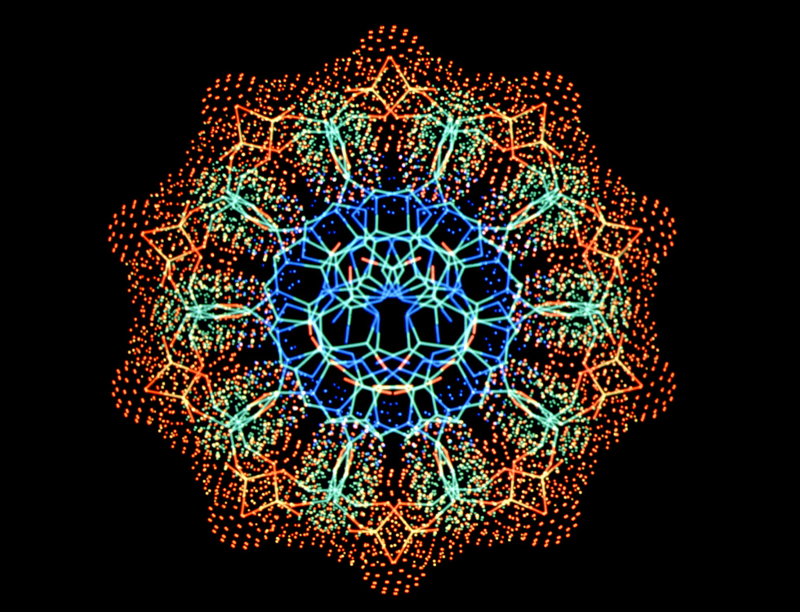 |
Evans & Sutherland LDS1 (~70's):
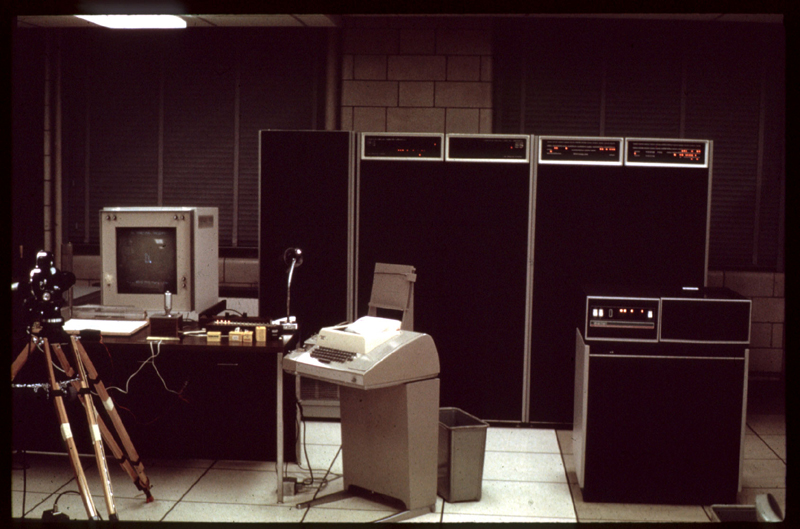 |
Illustrates the old, painful way of putting molecular graphics images into a presentation (used into the 90's): camera, tripod, turning out the lights, multiple exposures of each image, getting slides developed, inserting them into a carousel!
Some of the images above were taken from the slide show associated with a 2002 interview of Bob Langridge by Russ Altman.
See also: SBGrid Consortium's brief history of UCSF Chimera (Oct 2014)